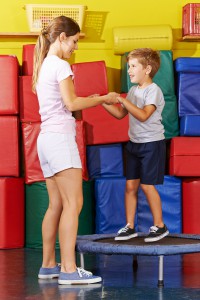What does autism “awareness” mean to you? Better question—what does it mean to those who think autism doesn’t touch them?
“Awareness” may be another one of those words I have to consign to quotation marks, along with “normal” and “typical.” Awareness was an ambitious goal ten years ago, and still is in many countries, but here in the United States it is no longer enough for me. Awareness that doesn’t result in action clangs hollow to me. “Yes, we are aware that some people have autism, and we would do something about it if we could but we can’t so we won’t . . . It’s not my job . . . Our school, our community doesn’t have the money . . . We don’t have the time . . . We don’t have anyone in our family with autism so it’s not my problem.” A society can be as aware of autism as they are of the weather but if, like the old weather cliché, everyone grumbles but nobody does anything about it, awareness may then turn divisive and destructive, driving our children with autism farther to the edges of community.
The shortsightedness and self-interest of others remain two of our kids’ most formidable barriers. Those who still view autism as a dubious diagnosis regard it as a resource-suck on schools and a lever that will ratchet insurance premiums higher as both are forced by law to serve our kids. If I had the power to force anything, it would be to include in all our discussions on education and health care for children with autism the cold calculation of what it will cost society through sixty years of adulthood if in their childhoods we do not do everything in our power to produce a physically and emotionally healthy, self-sufficient adult.
So now when Autism Awareness Month approaches, I blur past awareness and dream bigger. I envision Autism Action Month. What might that look like?
My list of what I’d like to see during my idealized Autism Action Month is not comprehensive, and I have no ideas whether any of it is evidence-based. It is supported only by my hopes, experiences, pipe dreams and vision, and by my belief that we raise adults, not children, and that the journey to independence begins in earliest childhood.
1. Raise/allocate funding for research and outreach on feeding therapies, and for food programs and nutrition education. Too many children with autism have feeding issues, food security issues, or both. The  availability of food and our kids’ ability to ingest adequate nutrients is bedrock to their ability to meet their full potential. The National Institutes of Health report that young children from food-insecure households are two-thirds more likely to be at risk of developmental problems than those from households with enough to eat. Even in food-secure households, the child with autism may suffer severe lack of nutrients due to his hypersensitive gustatory system and insistence on eating only a few, often highly processed, foods. Without adequate nutrition, children can’t learn, can’t “behave.”
availability of food and our kids’ ability to ingest adequate nutrients is bedrock to their ability to meet their full potential. The National Institutes of Health report that young children from food-insecure households are two-thirds more likely to be at risk of developmental problems than those from households with enough to eat. Even in food-secure households, the child with autism may suffer severe lack of nutrients due to his hypersensitive gustatory system and insistence on eating only a few, often highly processed, foods. Without adequate nutrition, children can’t learn, can’t “behave.”
2. Raise/allocate funding for sensory evaluations of classrooms, and for sensory makeovers of classrooms. Noise, visual clutter, smells, textures can make learning almost impossible for some of our kids. Sensory classroom accommodations benefit all kids, not just those with autism.
3. Restore or create Adapted PE programs throughout K-12. Adapted physical education specialists are teachers  trained in making modifications to equipment and curriculum so that children with supplemental needs can participate in general education PE classes with their peers. PE can be a confusing mix of motor skills, rules and all the social complexity that goes along with the concepts of teams and competition. Physical activity is a wellness issue for all kids; for the child with autism, being able to participate with peers goes a long way toward erasing yet another distinction that may separate the child with autism from his contemporaries.
trained in making modifications to equipment and curriculum so that children with supplemental needs can participate in general education PE classes with their peers. PE can be a confusing mix of motor skills, rules and all the social complexity that goes along with the concepts of teams and competition. Physical activity is a wellness issue for all kids; for the child with autism, being able to participate with peers goes a long way toward erasing yet another distinction that may separate the child with autism from his contemporaries.
4. Build leadership opportunities into social skills curricula and IEPs. Many children with autism live with a constant stream of messages telling them what they do wrong or inadequately. But all children are good at something. Creating opportunities for them to lead and teach reinforces their sense of being part of a community in which there will always be people more and less capable. Example: A child who knows his favorite book inside out can teach it to the rest of the class or to a smaller reading group or a younger class. He can lead the group in reading it, then asking questions he has written down ahead of time (with the help of teacher, therapist or parent) about the main characters, setting and sequence of events. Dozens of opportunities like this exist in a single day. In elementary school, my older son taught kindergarteners basketball skills, and my movie-buff younger son volunteered to give a powerful speech summarizing the movie Supersize Me. It left his classmates open-mouthed.
5. Bring back curricula in independent living skills, trades. How about some brutal honesty in math requirements? The majority of high school graduates are not headed for careers wherein they’ll need advanced algebra, but all will need consumer math – literacy in salary/benefit calculations, household budgeting, savings, investments, responsible use of credit, tax preparation, how to buy a car, how to rent an apartment, how to calculate a discount, how to read a recipe, how to convert metrics. A recent survey of high schoolers revealed significant interest in reviving what used to be called home ec—cooking, do-it-yourself repairs, budgeting. And let’s bring introductory classes in the trades back to high school. Trades are necessary to society, and not every student is headed for a four-year college (or should be). Students with autism often have narrow interests but may be highly skills in a particular area. Encouraging employment and independence through trades is every bit as legitimate as encouraging college attendance.
6. Urge and empower employers to create jobs for workers with autism. Let’s ask employers to create one  new job, even part-time, for a teen or adult with autism. We’ll provide a short workshop, online tutorial or reading links and a volunteer consultant who will help them design simple accommodations that will allow the employee with autism to succeed.
new job, even part-time, for a teen or adult with autism. We’ll provide a short workshop, online tutorial or reading links and a volunteer consultant who will help them design simple accommodations that will allow the employee with autism to succeed.
7. Strengthen transition to college programs. Liaison services or consultants can provide immeasurable help for students with disabilities (federal word, not mine) navigating the college labyrinth of financial aid, course selection, registration, housing, support and advisory services. How accommodating a college is to the student with learning differences might be more important than whether they offer your student’s chosen major. College administration attitudes ranges from “this is college, deal with it” to extensive services offered. We need a clearinghouse to identify colleges more active in helping students with autism and other learning differences, and a registry of transition consultants. Bryce attends Portland Community College, where disability accommodations include supports such as note-taking, in-class aides, sign language interpreting and transcribing, accommodated testing, ergonomic furniture, adaptive technology, alternate forms of print (large print, Braille, audio, etc.), captioning for video, liaison services, course substitutions or modifications. Students with autism can succeed at schools that want them to succeed.
Author Walker Percy said, “To become aware of possibility is to be onto something.” Being onto something is a good start, but it’s not an achievement until it becomes something. When we convert possibility to deed, we move beyond awareness into the kind of action that makes way for our children to grow into adults able to take their rightful, useful places in their communities, and for those communities to see themselves as the beneficiary.
© 2013 Ellen Notbohm www.ellennotbohm.com. Contact the author to reproduce in any way.
Ellen Notbohm is author of one of the autism community’s most beloved books, Ten Things Every Child with Autism Wishes You Knew, and three other award-winning books on autism that have delighted and informed millions in more than twenty-five languages. Read excerpts and subscribe to Ellen’s newsletter at www.ellennotbohm.com.

Leave A Comment